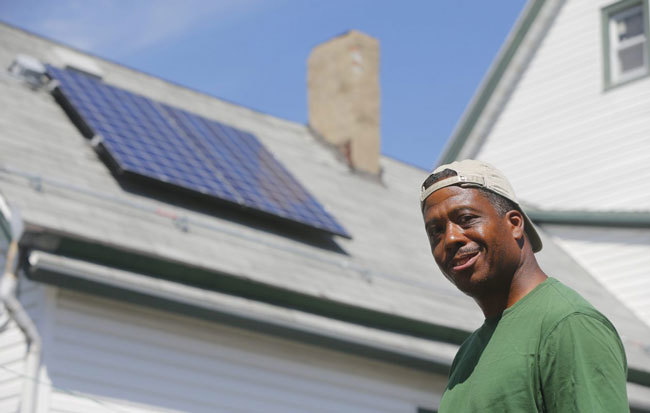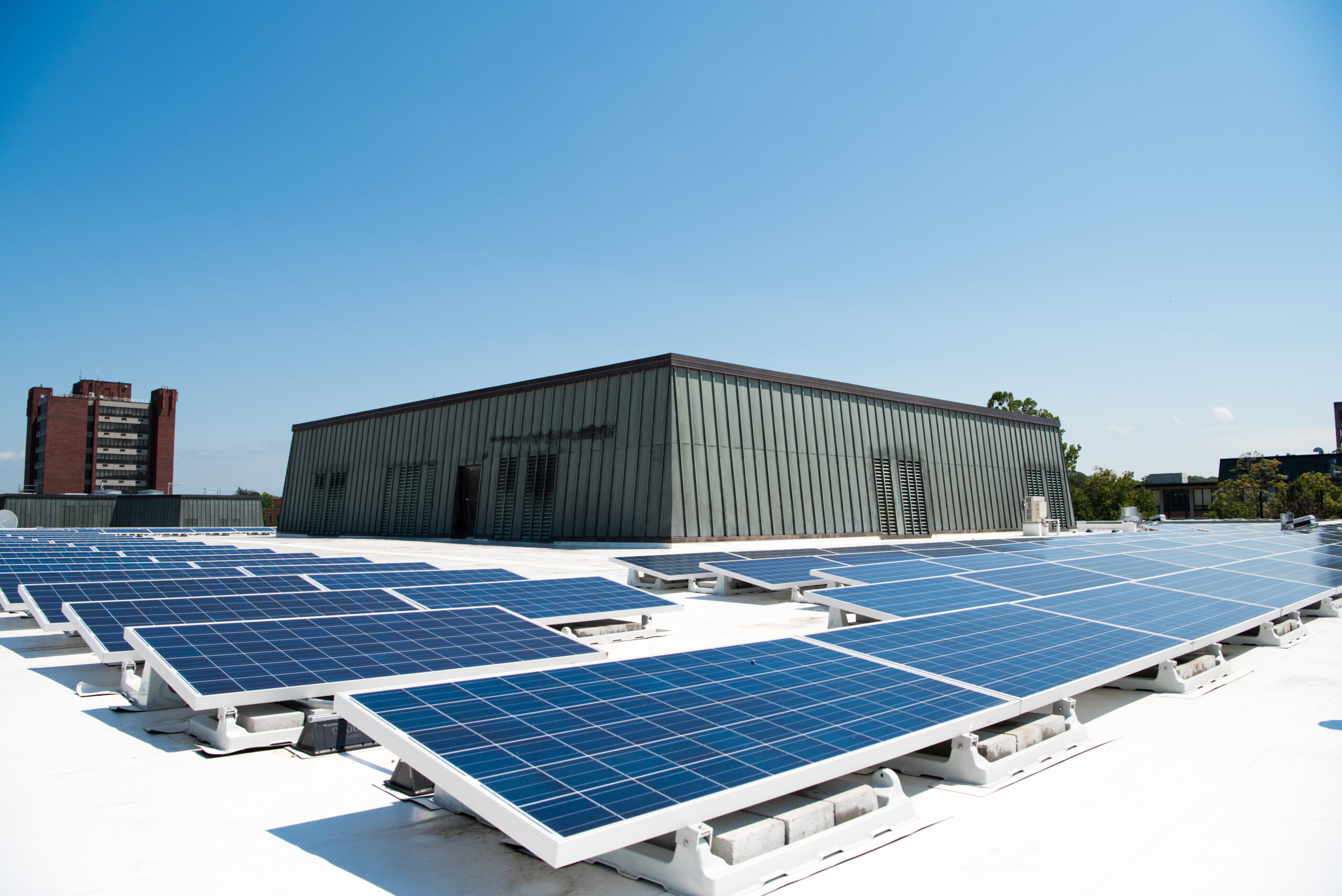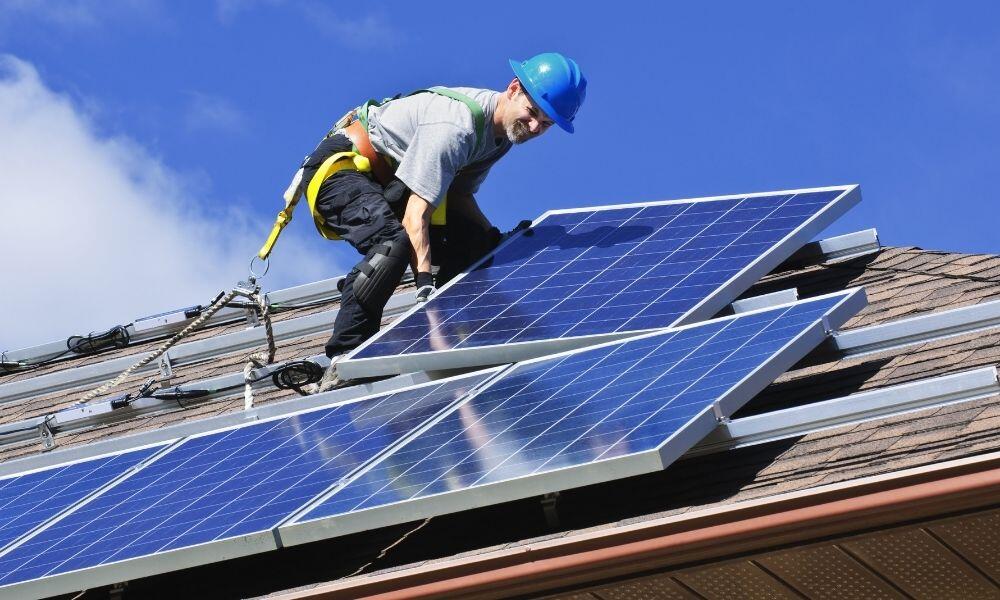Fruit Belt solar power installations reach milestone

Photo Courtesy: Mark Mulville/Buffalo News
buffalonews.com
Matt Glynn
July 18, 2017
Connie Ervin was one of the first residents in the Fruit Belt to have a solar panel system installed on her home’s roof as part of National Grid’s solar power demonstration program.
Naturally, she fielded a lot of questions.
“Whenever I was out on the porch or working in the yard, neighbors would stop by and have conversations and ask how the process worked,” said Ervin, who is retired from Rich Products. “I’ve kind of been a voice to the project.”
The panels on Ervin’s Mulberry Street home are one of the reasons National Grid’s $3.7 million program has achieved a milestone. The utility has received enough customer commitments for the program to reach its full 500 kilowatt generating capacity.
Participating residents – along with some churches and a nonprofit – are having the systems installed by Solar Liberty at no cost. The power generated by the rooftop arrays will be sold into the state’s electricity market, and money from those sales will be used to reduce the participants’ energy bills.
Along with benefiting the residents, the utility will examine the effect of adding solar power to its grid, from a concentration of arrays in one neighborhood.
Representatives of National Grid and other project partners – including the Buffalo Niagara Medical Campus and the New York State Energy Research and Development Authority – gathered Tuesday next to the First Centennial Baptist Church to talk about the results thus far. The church’s solar array shimmered in the sunshine.
“We’ve made tremendous progress,” said Ken Kujawa, National Grid’s regional manager. “This is really an opportunity for us to study the impact of a solar installation on a feeder here in the city of Buffalo and see what it means for our distribution system. On top of that, the added benefit is, it provides a tangible financial benefit to the residents in the Fruit Belt who are participating in the program.”
Participants are receiving a monthly credit of about $15, which appears as a line item on their bills. “For a person who’s paying somewhere around $60 a month, that’s a quarter of their bill off,” said Jon Nickerson, project manager for National Grid.
So far, 44 solar systems have been installed, and 15 of those are connected to the grid. The other 29 should be connected within the next three weeks, Nickerson said. Another 40 systems are yet to be constructed, and should be in place by November.
“We still have a road ahead, but a good road ahead,” said Melanie Littlejohn, National Grid’s vice president of customer and community relations.
About 50 other participants who applied for the program, but whose homes weren’t suitable for a rooftop system, also are receiving a credit on their monthly bills.
Assemblywoman Crystal D. Peoples-Stokes, D-Buffalo, said developing sources of sustainable energy is vital.
“National Grid has come up with a way to emulate that, but not just by putting up, say, windmills on the water, but by coming into an urban community and figuring out how to use the sun to create more energy,” she said.
When the first community meetings about the project were held, residents were skeptical, Peoples-Stokes recalled. “People were shaking their heads: ‘This can’t be true.’ Well, it is true. And I think this is the best way to get a message out, by getting results.”
National Grid says that the 500 kilowatt capacity will allow it to conduct a grid efficiency analysis in 2019, and help determine whether such a project is feasible to try elsewhere.




